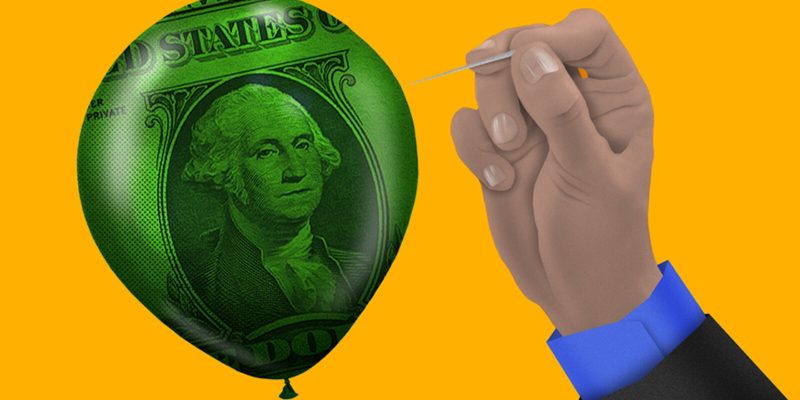- The NUON flatcoin is pegged to the value of $1 on July 1, 2022 — worth $2.04 as of Monday
- “We’re trying to blend the best of both worlds where we take the user experience from the stablecoin market and the inflation hedge from bitcoin,” Laguna Labs’ founder said
As inflation rates go to the moon, so-called “flatcoins” are coming along for the ride.
Flatcoins are a new category of stablecoins that are pegged to the cost of living instead of real-world assets such as fiat currencies. Blockchain development house Laguna Labs is launching one of the first digital assets in this new category. If successful, their flatcoin could represent a legitimate inflation-hedging cryptocurrency as global inflation figures remain hot.
Their nuon flatcoin is pegged to the value of what $1 was on July 1, 2022. Once a day, the flatcoin’s value recalibrates to account for US dollar inflation. One nuon — worth $1 four months ago — was valued at $2.04 on Monday.
To produce its daily inflation adjustment, Nuon developed the Truflation algorithm, which tracks price movement across ten million items and produces a daily inflation estimate that mostly tracks with Fed estimates.
With inflation at multiple-decade highs, dollar-pegged stablecoins such as Circle’s USDC and Tether’s USDT depreciate in value relative to the cost of goods over time. A flatcoin such as nuon holds its value through periods of inflation. Coinbase CEO Brian Armstrong and Ethereum co-founder Vitalik Buterin have both advocated for cryptos pegged to the cost of goods rather than fiat currencies.
Like most major stablecoins, nuon is intentionally overcollateralized — and will automatically liquidate user loans if the value of their collateral falls below a given level. The hurdle Nuon faces is maintaining an ever-increasing peg, as US inflation has occurred every year since 1954.
Nuon’s algorithm tinkers with the coin’s collateralization ratio so traders will keep the token at its peg. The collapsed Terra stablecoin used a similar system, though the coin was not fully collateralized. As long as investors are willing to mint and burn nuon, the flatcoin’s value ought to remain roughly flat — despite inflation.
Stefan Rust, CEO of nuon developer Laguna Labs, said he doesn’t see the token competing with the likes of Circle or Tether but hopes the flatcoin can join bitcoin as investors’ go-to inflation hedge.
“Bitcoin is an amazing hedge against inflation, but it has got a level of volatility to it,” Rust said. “We’re trying to blend the best of both worlds where we take the user experience from the stablecoin market and the inflation hedge from bitcoin.”
A TradFi analogue for flatcoins is inflation-linked bonds, which adjust interest rates based on inflation and grew in popularity following the Great Recession. Like inflation-linked bonds, flatcoins become a less desirable asset when inflation cools down.
“If deflation happens, you are underwater, if you will, but your purchasing power always stays the same,” Rust said.
Nuon is now running on a testnet with the intention of going live in the first quarter of 2023. The flatcoin will go live on decentralized crypto exchanges before seeking approval to be listed on centralized exchanges.
Get the day’s top crypto news and insights delivered to your inbox every evening. Subscribe to Blockworks’ free newsletter now.
The post What Are Flatcoins and Are They a Better Inflation Hedge? appeared first on Blockworks.




Comments